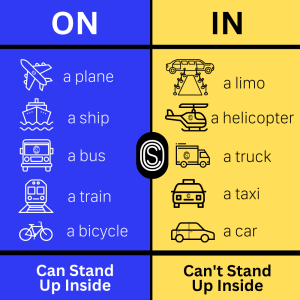What is Comparative Advertising and Can I Use It on Facebook?
Comparative advertising is a type of advertising in which a company’s product or service is presented as superior to a competitor’s.
This is done by directly or indirectly comparing the two products or services. Comparative advertising can be a powerful marketing tool, but it must be used carefully.
Comparative ads tap on dichotomous thinking which is the propensity to think of things in terms of binary opposition.
- Us against Them
- Here and There
- Black or White
- Good or Bad
- All or Nothing
- Cool or Not Cool
- New or Old
- On or In

Comparative Advertising is Effective for a Number of Reasons
- It can help to increase brand awareness. When a company compares its product or service to a competitor’s, it is essentially giving consumers a reason to pay attention to its brand.
- Comparative advertising can help to build brand credibility.
- When a company is willing to compare its product or service to a competitor’s, it is essentially showing that it is confident in its own product or service.
- Comparative ads can help to boost sales. When consumers see that a company’s product or service is superior to a competitor’s, they are more likely to choose that product or service.
- It can be attention-grabbing: When a company compares its product or service to a competitor’s, it is essentially creating a “competition” in the minds of consumers.
- It can be persuasive: When a company is able to show that its product or service is superior to a competitor’s, it can be very persuasive to consumers. This is especially true if the comparison is based on objective criteria, such as price, features, or performance
- It can be informative: Comparative advertising can be a very informative way for consumers to compare different products or services. This can be especially helpful for consumers who are not familiar with the different brands or products on the market
Need help with your social media? Book your 1:1 consultation today and get started.
Rules of Comparative Advertising in Australia
- The comparison must be truthful and accurate.
- The comparison must be relevant to the product or service being advertised.
- The comparison must not be misleading or deceptive.
- The comparison must not be unfair.
- The comparison must not be likely to mislead or deceive consumers.
Some Risks Associated with Using Comparative Advertising
- Comparative advertising can backfire. If the comparison is not truthful or accurate, it can damage the company’s reputation.
- Comparative advertising can lead to lawsuits. If a competitor feels that its product or service has been unfairly compared, it can sue the company that made the comparison.
Find out how the Travel Wallet, a unique assembly of essential resources and knowledge, can set you up for success in digital marketing and a digital nomad lifestyle.
5 Comparative Ads You Can Use LinkedIn or Facebook
- Comparing value: This strategy involves comparing the value of a company’s product to a competitor’s. For example, an ad might say “Our product is three times more effective than other brands on the market.”
- Taste tests: This strategy involves giving customers samples of two or more products, without revealing the brands, and asking them which one they prefer. For example, a soft drink company might do a taste test to show that its product is more popular than a competitor’s.
- Live demonstrations: This strategy involves showing how a company’s product works compared to a competitor’s. For example, a vacuum cleaner company might do a live demonstration to show that its product cleans better than a competitor’s.
- Emphasising lifestyle: This strategy involves showing how using a company’s product can lead to a better lifestyle. For example, a car company might show an ad of a happy family driving their car to a beautiful vacation destination.
- Side-by-side visuals: This strategy involves showing two products side by side so that consumers can easily compare them. For example, a clothing company might show an ad for two similar-looking shirts, one from their own brand and one from a competitor, to show how their shirt is better made.
Bonus Comparative Ads You Can Use LinkedIn or Facebook
- Customer experience reenactments: This strategy involves showing how easy it is to use a company’s product by reenacting the experiences of real customers. For example, a bank might show an ad for a customer who easily opened a new account online.
- Displaying unique features: This strategy involves highlighting the features that a company’s product has that no other product has. For example, a phone company might advertise that their phone is the only one on the market with a built-in projector.
- Testimonials: You can use testimonials from customers who have used your product or service to compare it to a competitor’s. For example, you could create an ad that says “Our product is the best on the market, according to our customers.”
Here are some examples of comparative advertising:
- Pepsi Challenge: In the 1970s, Pepsi ran a series of ads that challenged consumers to taste Pepsi and Coca-Cola side by side. The ads showed that more people preferred the taste of Pepsi.
- Head-to-head comparisons: Some companies compare their products or services directly to a competitor’s. For example, two different brands of toothpaste might run ads that compare their ingredients, effectiveness, or taste.
- Implied comparisons: Sometimes, companies don’t mention a competitor by name, but they imply that their product or service is superior. For example, an ad for a new car might say that it gets better gas mileage than “the competition.”
- Whether or not comparative advertising is effective depends on a number of factors, including the target audience, the product or service being advertised, and the way in which the comparison is made. However, when used correctly, comparative advertising can be a powerful tool for increasing brand awareness, building brand credibility, and boosting sales.
Start-up brands should avoid comparison ads, but mature brands can thrive on them.
This is because comparison ads can be seen as aggressive or negative, and they can backfire if the start-up brand is not well-known. However, mature brands that are well-established and have a strong reputation can use comparison ads to their advantage by highlighting their differences from the competition.
When a start-up brand is first launching, it is important to focus on building brand awareness and credibility.
Comparison ads can be seen as aggressive or negative, and they can damage a start-up brand’s reputation. It is better for start-up brands to focus on positive advertising that highlights the benefits of their product or service.
Once a brand is well-established and has a strong reputation, it can use comparison ads to its advantage.
Comparison ads can help to differentiate a mature brand from the competition and highlight its unique selling points. This can be a very effective way to boost sales and grow the brand.
Follow or connect with Crom Salvatera on LinkedIn.


